


YEREVAN, ARMENIA—There’s a newfound hope on the streets in the capital of the oldest Christian nation in the world, but it’s a cautious hope. Armenians have been burned in the past by adversaries who ignore ethical norms and so-called protectors who have failed to come to their aid.
Armenia sits between three Muslim nations — Azerbaijan, Turkey, and Iran — and has faced constant pressure and threats from the Turkey-Azerbaijan alliance. It’s “a beautiful country in a bad neighborhood,” as Jacob Pursley, a missionary in Armenia, put it during a conversation with The Daily Wire. Armenia’s relationship with its neighbors, however, could be on a better trajectory — or at least that’s the hope after the Trump administration got involved in an effort to kick-start trade and ensure stability in the region.
In late September, less than two months after President Donald Trump sat down with Armenian Prime Minister Nikol Pashinyan and Azerbaijani President Ilham Aliyev to begin the process of a peace agreement, The Daily Wire spent a week in Armenia, traveling the country and speaking to people about what their country has faced and what they think about the potential deal with Azerbaijan.
A Cautious Optimism
In Armenia’s capital city of Yerevan, people went about their lives with no signs of angst, despite the country facing threats and violence just months ago. Leaders with Save Armenia, an advocacy group that accompanied The Daily Wire on the trip, said that the optimism in Armenia in late September was palpable — a complete turnaround from the fear and anxiety that had been felt among the people in recent months.
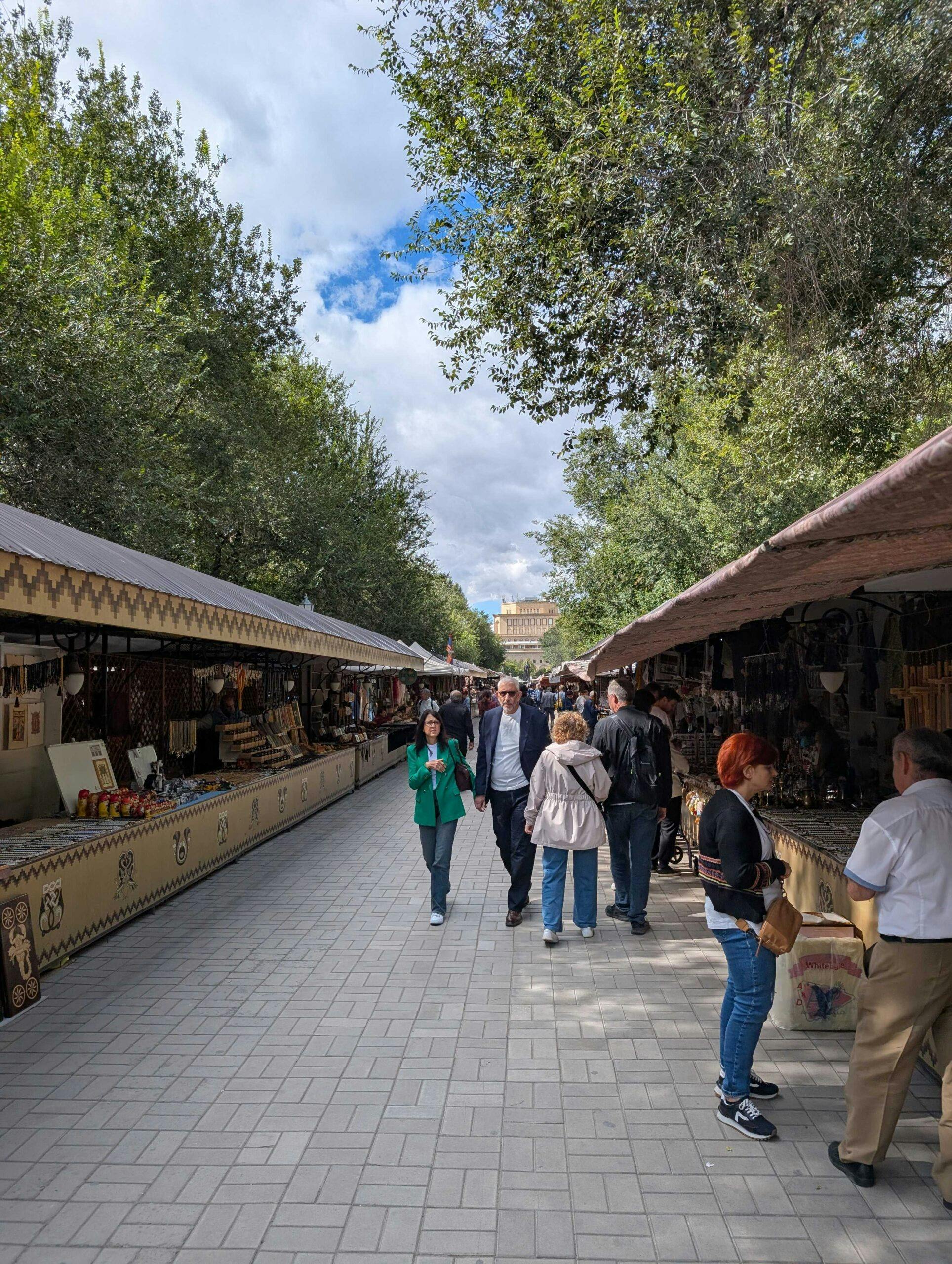
Armenians shop at an open market in downtown Yerevan on September 20, 2025.
Armenian activists, religious leaders, and citizens who spoke at events attended by The Daily Wire last month were quick to express gratitude to the United States, which had pressured Azerbaijan’s leader, Aliyev, to initiate the process of a peace agreement with Armenia. Among Armenians, it’s clear that Trump’s involvement in the region has calmed a situation that was boiling over and on the brink of catastrophe.
Azerbaijan was just weeks away from launching a full-scale invasion of Armenia earlier this year when the Trump administration decided to take action and negotiate a peace agreement between the two nations, as The Daily Wire reported at the time. The Trump administration’s quick action to bring Aliyev to the table likely staved off another deadly conflict between the two nations — at least for now.
While many Armenians are excited that the United States has taken action to pursue peace in the region known as the South Caucasus, they also know that the threats and violence against them won’t magically disappear.
There’s lingering trepidation that Aliyev is not serious about seeking peace with a people that he has ethnically cleansed from Nagorno-Karabakh, which was once an Armenian region inside of Azerbaijan. Some Armenians are also concerned that the Trump-brokered deal doesn’t go far enough to hold Aliyev’s regime accountable, as dozens of Armenians continue to be held as hostages in Azerbaijan, with no plan for their safe return to their home country.
At least 23 known hostages are currently being held by the Azerbaijani regime, but Armenian activists believe that number could be as high as 80 people.
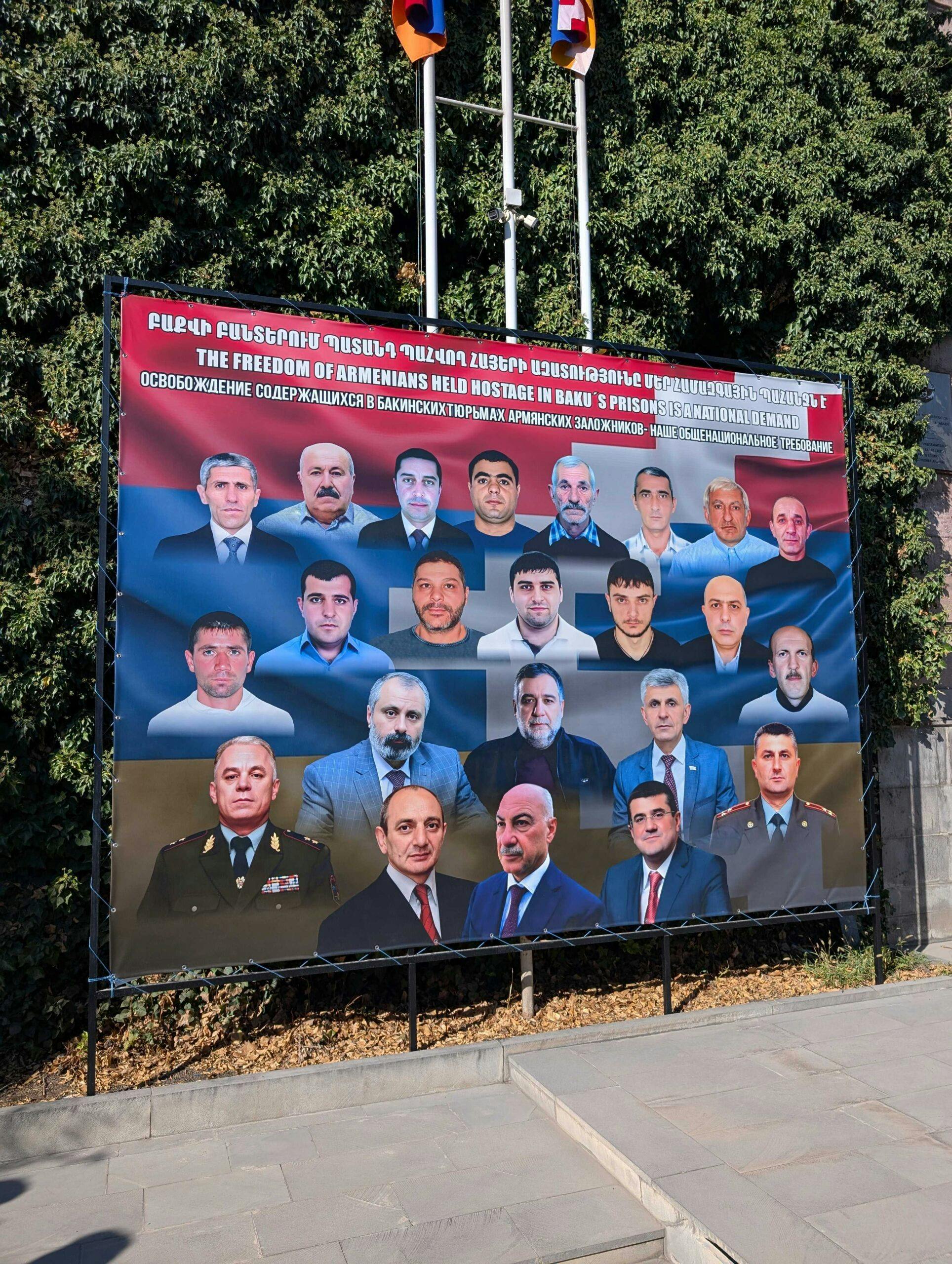
A sign in Yerevan showing the faces of the 23 known hostages still held in Azerbaijan.
The Road to Peace
The largest part of the proposed deal is the Trump Road for International Peace and Prosperity, or TRIPP, a major thoroughfare intended to link Armenia with its neighbors, thereby opening up more opportunities for business and trade. The trade route would pass through the Syunik province in Armenia’s south, involving the repair of railways and the construction of new roads to facilitate increased international and domestic transportation.
The situation in the South Caucasus is far from being solved, however. The deal agreed upon in August — while setting the table for long-term peace — is not a finalized agreement, and negotiations between the countries are likely to continue for at least the next three years, according to Armenian political experts whom The Daily Wire spoke to while in the country.
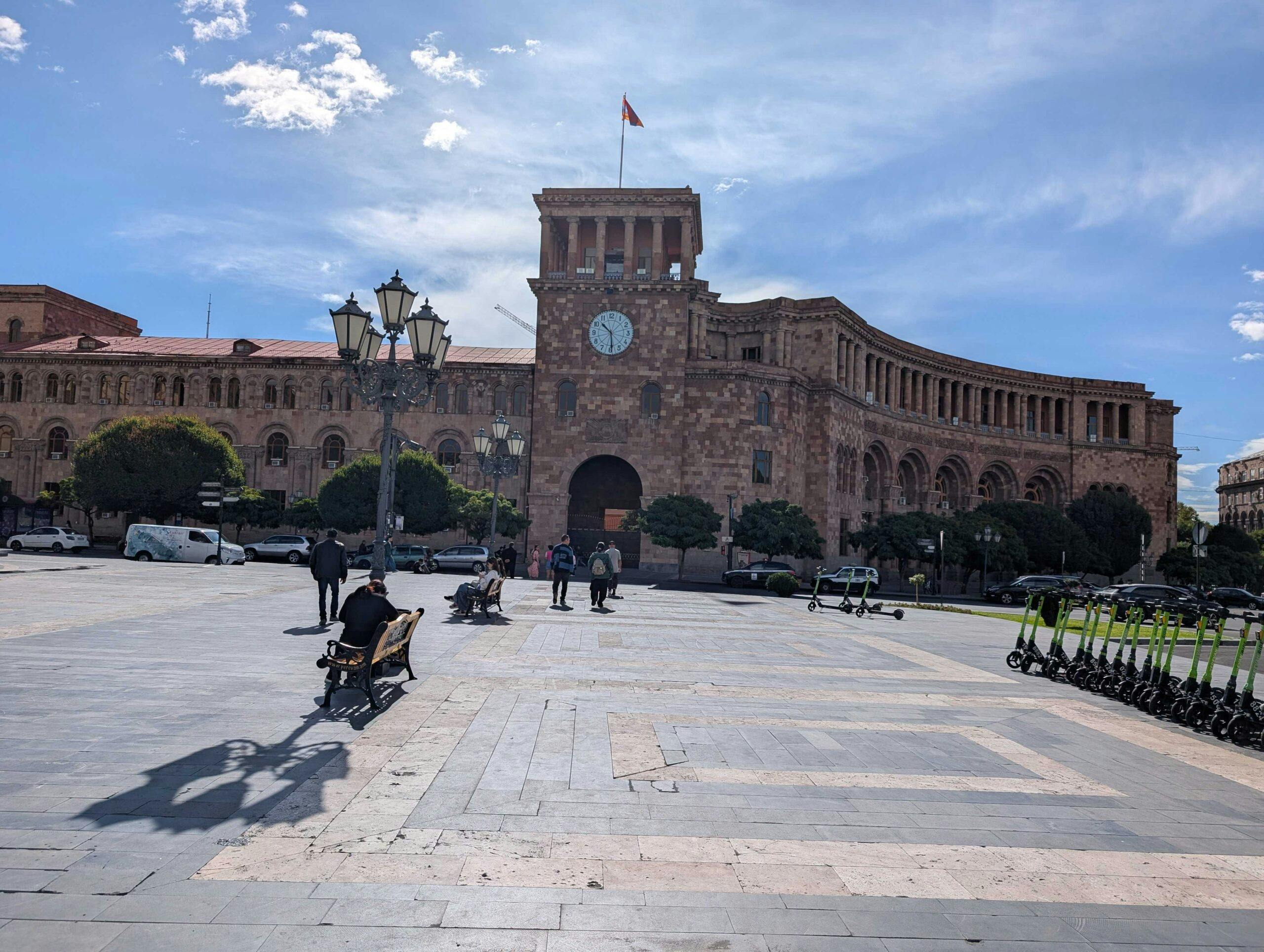
The Government House in Yerevan, which houses the prime minister’s office.
Armenians know that a lot can change in three years, which is why many of them are expressing their gratitude with a grain of salt. In the past five years alone, Armenians have been targeted by Azerbaijani aggression on multiple occasions.
For some refugees from Nagorno-Karabakh, which Armenians often refer to as Artsakh, the proposed deal does not go far enough. The plan put forward by the Trump administration and supported by the Armenian government does not include any guarantee that Armenians will be allowed to return to Nagorno-Karabakh, nor does it demand that Azerbaijan hand over Armenian hostages.
“We want peace much more than anyone in our community, but we want sustainable peace. We want just peace. We want dignified peace,” said Artak Beglaryan, the president of the Artsakh Union and a former state minister of Artsakh. Beglaryan was one of the tens of thousands of Armenians forced to flee his homeland when Azerbaijan attacked Artsakh.
After taking refuge in Armenia following Azerbaijan’s takeover of Artsakh, Beglaryan has been advocating for Armenians to be allowed to return to their homeland, which is surrounded by Azerbaijan. He has also pushed for the Armenian government to do more to bring back the hostages.
“We are not against any peace deal,” he added. “We are for peace deals, but we are against the peace deals which are not just, which are not dignified. Since the Armenian government doesn’t take any responsibility for our rights, including our right to return, that’s why the international community doesn’t do anything, including mediators, including President Trump.”
The Daily Wire heard firsthand accounts of the brutal conditions that hostages and prisoners of war have faced while in Azerbaijan. During a press conference The Daily Wire attended in Yerevan on September 24, Armenians who were victimized by Azerbaijani violence shared harrowing stories.
The Center for Truth & Justice, which organized the press conference, said that it has collected around 600 testimonies from Armenians, including Artsakh refugees. The group has also collected over 30 testimonies from repatriated Armenian POWs, which “show systematic abuse” and “degrading treatment of Armenian prisoners for their ethnic identity and religion.”
Mels Ambardaryan, an Armenian soldier who spoke at the press conference, described how he and dozens of his fellow soldiers were taken as prisoners of war by Azerbaijan and were beaten with wooden and rubber sticks. The soldier remained in a prison in Azerbaijan for 11 months before he was finally released. For three of those months, the detained soldiers had no contact with their families.
“We didn’t know whether our families were aware of us being in captivity or whether they thought we were missing or maybe dead,” Ambardaryan said.
Some specific demands from Armenian activists are not addressed in Trump’s proposed peace deal, but the agreement does promise to rejuvenate the Armenian economy while also providing the country with an important security blanket.
For the past five years, Azerbaijan has threatened to encroach on Armenia’s sovereignty, pushing for its own trade route — called the Zangezur Corridor — that would cut through Armenia and connect Azerbaijan to its landlocked exclave, Nakhchivan. Under the TRIPP proposal, Armenia and the United States would build a major trade route through Armenia’s southernmost province, Syunik, that Azerbaijan could use freely to gain better access to Nakhchivan.
While the United States has not signed onto any security guarantees for Armenia, TRIPP would likely serve as a de facto security guarantee.
“The United States’ presence would alleviate Armenia’s concerns. It would also mitigate Azerbaijan’s concerns, and Azerbaijan would no longer have the Zangezur Corridor premise to attack,” Dr. Nerses Kopalyan, an Armenian-American political science professor at the University of Nevada, Las Vegas, told The Daily Wire in August.
Reckoning with a Violent Past
For much of Armenia’s recent history, its people have been all too familiar with violence.
Just over 100 years ago, Armenian Christians living in the Ottoman Empire were rounded up and murdered in one of history’s most covered-up genocides. The genocide was perpetrated by Turks who wanted to rid the region of the Armenian Christians to pursue their dreams of Muslim Turkish dominance. As many as 1.2 million Armenians were killed in the genocide, which lasted from 1915 to 1916, with sporadic massacres through 1923.
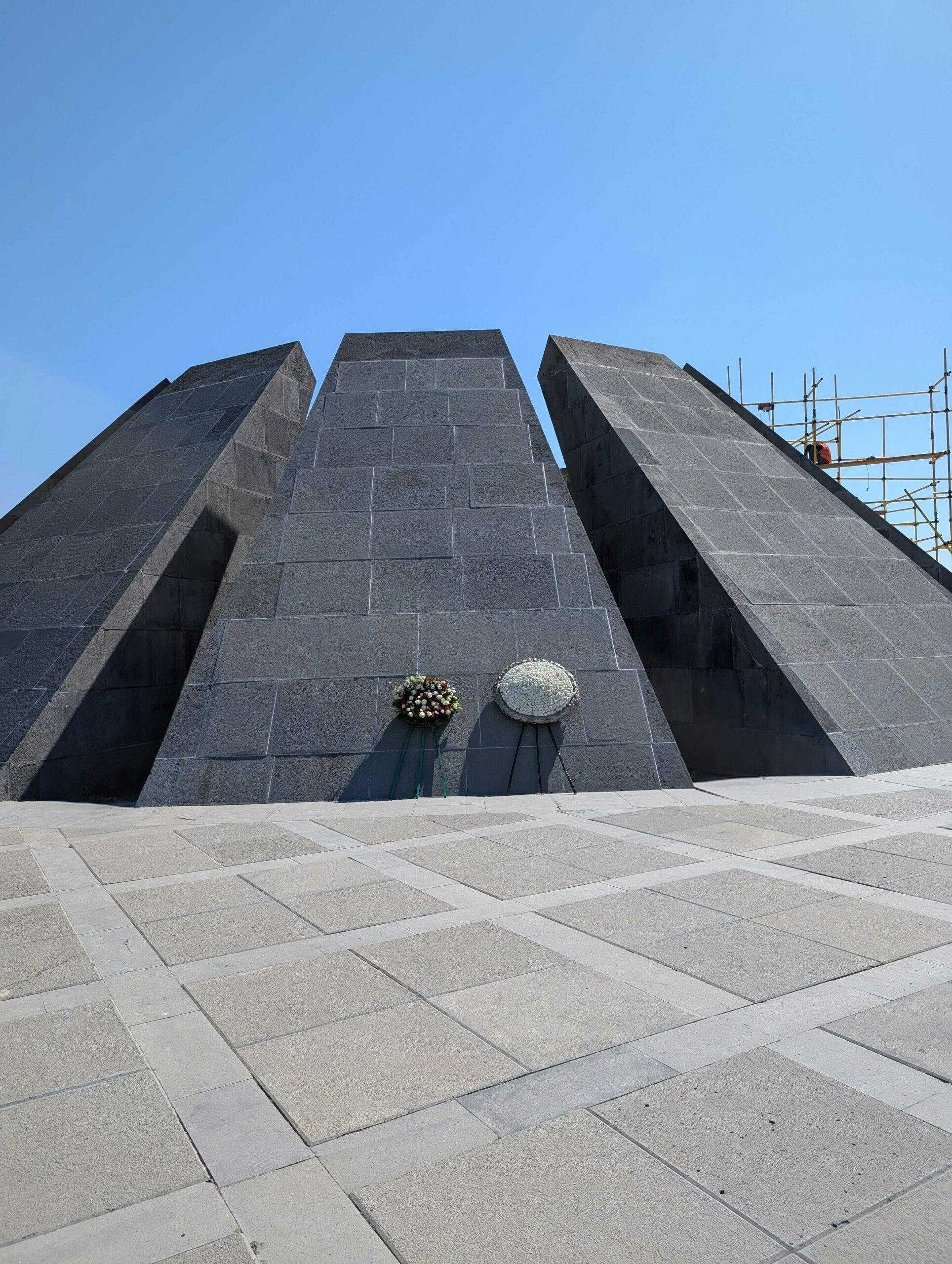
The Tsitsernakaberd Armenian Genocide Memorial in Yerevan.
For those who survived the genocide and their descendants, peace would come only to be interrupted by more violence.
For nearly 70 years, Armenia was part of the Soviet Union and relied on the Russians for its security. After the dissolution of the Soviet Union in 1991, Russia maintained its influence in Armenia. Even today, the Soviet Union’s influence is felt in the country’s brutalist architecture and the stoicism of its older generations.
Relying on the Russians for security turned out to be disastrous for the small country, as Azerbaijan, with support from Turkey, began purging ethnic Armenians from Nagorno-Karabakh during the “First Nagorno-Karabakh War,” which lasted from 1988 to 1994. The Russians, who were in the middle of a crumbling Soviet Union during that time, did little to help as the conflict between Armenia and Azerbaijan descended into full-scale war.
The war ended in 1994, but the conflict continued for decades, and Azerbaijan never gave up on its goal to completely take over Nagorno-Karabakh. In 2020, Azerbaijan launched an offensive against Armenians in the disputed territory. The Azerbaijani offensive, which came to be known as the “Second Nagorno-Karabakh War,” resulted in thousands of deaths on each side, and Azerbaijan took control of most of the region.
Get 40% off new DailyWire+ annual memberships with code FALL40 at checkout!
Just three years after ethnic Armenians suffered major losses in the “Second Nagorno-Karabakh War,” which spanned 44 days, Azerbaijan launched another offensive, setting up a blockade around Nagorno-Karabakh and moving to ethnically cleanse the Armenians who remained in the land. Over 120,000 Armenians living in Artsakh were forced to flee the region, and the Azerbaijani regime quickly took control of the area and began destroying Armenian Christian churches and monuments, erasing the thousands of years of Armenian cultural heritage in the Nagorno-Karabakh region.
Despite the recent progress made to bring Aliyev and Pashinyan together in Washington, D.C., there remains deep mistrust between the Armenian and Azerbaijani people. Just a few weeks ago, one of the leaders of the ruling party in Azerbaijan said, “Every Azerbaijani should always consider the possibility that any Armenian could be a potential terrorist.”
Relying on Faith for the Future
With the future of the South Caucasus still unknown, Armenians are relying on their Christian faith, which is deeply tied to their culture. Armenia, the oldest officially Christian nation in the world, is proud and protective of its ancient religious heritage. The country was first declared Christian in AD 301, more than 20 years before early church leaders met at the First Council of Nicaea to settle the doctrine on the nature of Jesus Christ. Through the millennia, that faith has remained culturally and politically significant for Armenia — even through wars, oppression, and genocide.
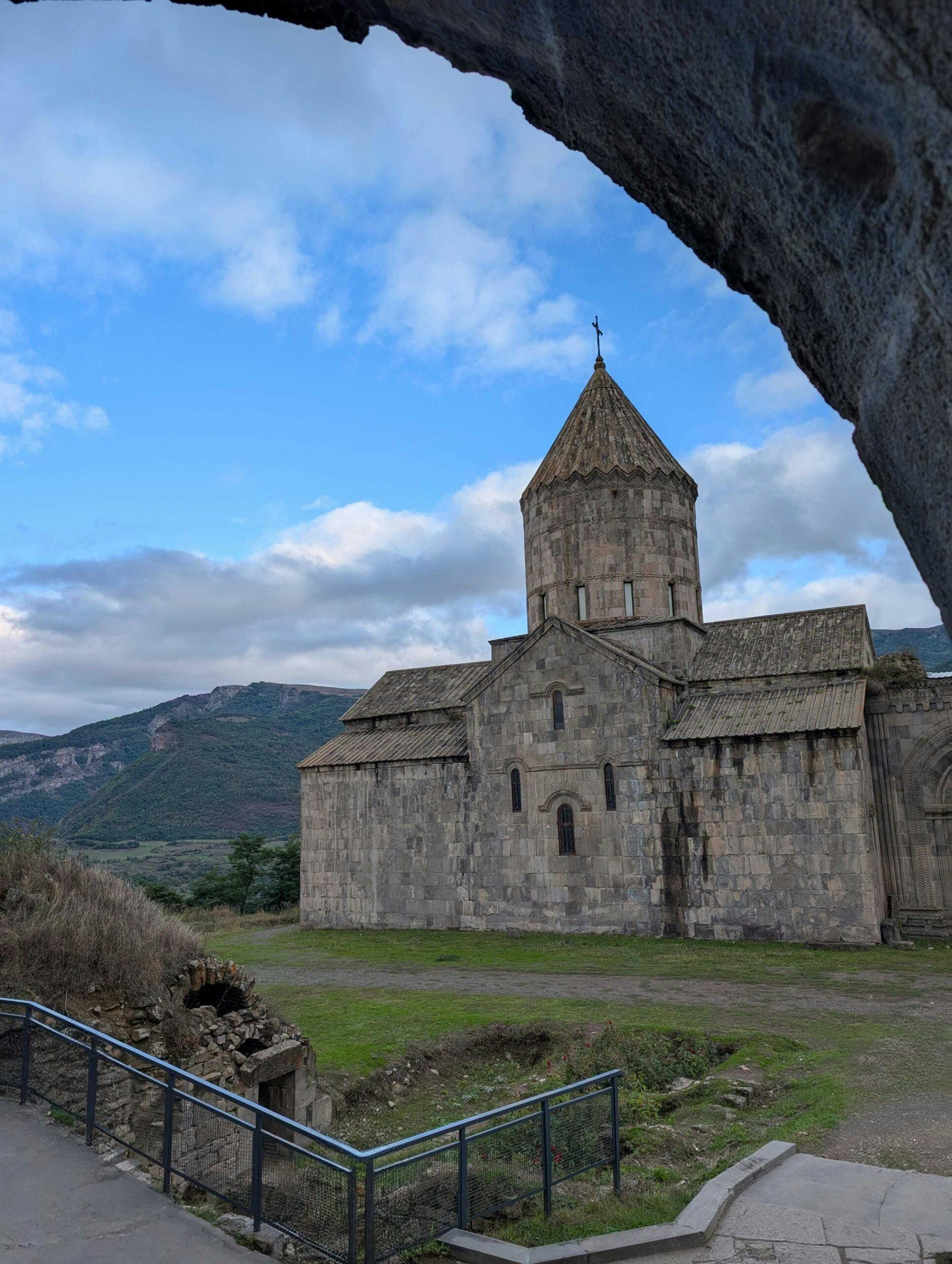
Tatev Monastery belongs to the Armenian Apostolic Church and was built in the 9th century. Tatev is located in the Syunik province, which borders Iran and Azerbaijan.
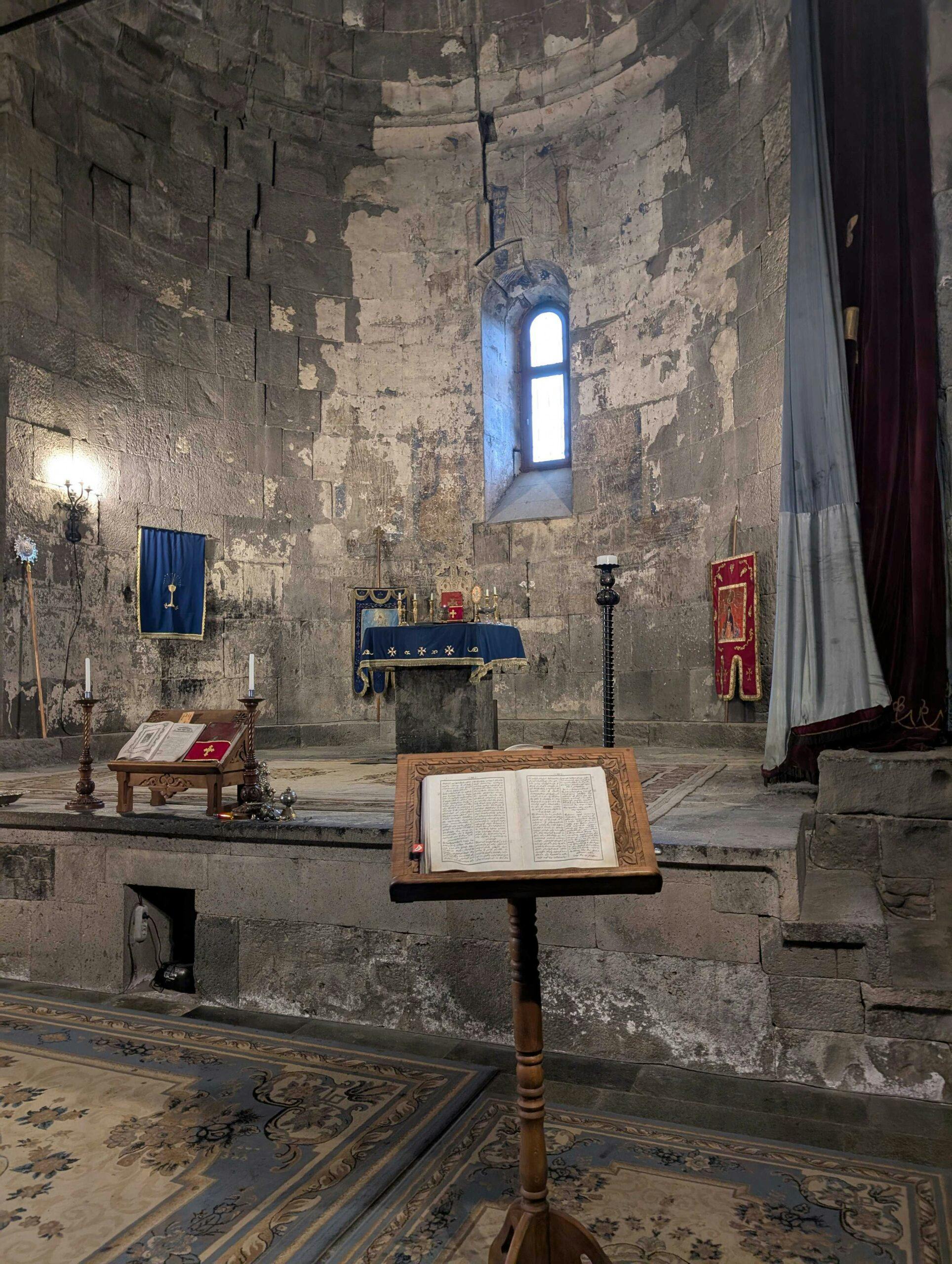
The inside of Tatev Monastery.
Today, that oppression rears its head in the form of ethnic cleansing and religious desecration in Artsakh. Along with forcing over 120,000 people to flee the region, Azerbaijan has also destroyed churches and Christian monuments that had stood in Artsakh for thousands of years.
Despite the oppression, Christianity remains a foundation for Armenia.
“They have retained their Christian faith and identity since AD 301,” said Pursley, a missionary whose ministry in Armenia focuses on reaching Muslims from neighboring countries. “They have been forgotten by the West because of location and because they were under Islamic suppression living under the Ottomans, then they were Soviet. So now, they are emerging for the first time to the West.”
Pursley credited Prime Minister Pashinyan for “opening the country to the West for the first time.”
“You’ve got villages with Christians that are worshiping Jesus, praying, coming together, and they’re the only country in this area that does that. Even Georgia, that’s supposed to be a Christian nation, is not like that at all. There’s no comparison. Armenia is very, very unique.”
